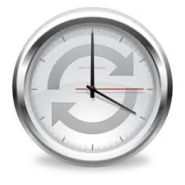Workflow and Archiving AVCHD footage
Posted by Dan Israel on Mar 7, 2009 in Video
UPDATED: Jan, 2013I have been using my Sony HDR-SR12 camcorder for several years now (
here is a link to that post). As much as I love this camcorder and storing straight to a hard drive, AVCHD footage presented some workflow challenges with my editing system – Final Cut Pro. And since Sony’s archiving software is Windows only and I work on a MAC, archiving was no picnic either. But the solution I’m currently using is achieving good results for both, so I thought I would share my process for anyone else facing these issues.In general encoding algorithms are design to balance the need for real-time data flow against file compression. In AVCHD, the files are encoded to maximize files size and processing of a very narrow processing set. Transcoding the footage for non-linear editing (i.e. Apple ProRes, etc.) offloads the need for processing by decompressing the files for fast retrieval. While this retains the quality, it significantly increases the file size (4-10 times). So, my main objective was to develop a workflow that would offload footage from the cameras internal drive for permanent storage without quality loss or increasing the file size, while still allowing for easy loading of any footage into Final Cut projects for editing.For workflow, I use Final Cut Pro’s “Log and Transfer” function (not “Log and Capture”) to transcode the files to my desired editing format. The trick was to copy the data off the camera to a structure that Final Cut Pro would still read within the Log and Transfer function. To do this, I used Retrospect to clone/copy the internal drive of the Sony Camera. Using Retrospect I was also able to synchronize the the cameras drive with a folder stored on an external Firewire drive. This feature allowed me to just copy over files that had been added since the last compare. It should be noted, I’m not making a backup of the drive…but a copy. The AVCHD file structure must remain intact for this to work. So, here is my workflow was my solution:
- After a shoot, I mount the camera to the MAC via the built in USB connect function.
- I then run a ChronoSync script that syncs the cameras drive to a matching external drive. (here is a link on that if you want more info)
- Mount the matching folder in Final Cut’s LOG & TRANSFER
- Transcode to ProRes422 and edit.
Once I’ve completed offloading the storage of the camera, I can reformat the Camera’s drive for the next shoot. Archiving the camera’s footage can be done simply by any Data Backup routine.
